Blow molding is a manufacturing process that creates hollow plastic products. By heating a plastic preform and inflating it with air into a mold, it shapes items like bottles, containers, and automotive parts.
This article will take you on a deep dive into the core principles, process flow, and widespread applications of blow molding technology in contemporary industry, unveiling the secrets behind this remarkable technique.
What Is Blow Molding?
Blow molding, also known as hollow blow molding, is a manufacturing process that creates hollow plastic products.
This involves heating a plastic preform until it becomes pliable, then using pressurized air to inflate it into a specific mold shape.
The cooling phase ensures the product retains its shape and maintains the integrity of the blow-molded item.
Blow molded plastics are used in packaging, automotive, construction, and more, producing items like containers, bottles, barrels, pipes, toys, automotive parts, and blow molded solutions.
The process involves heating thermoplastic resins, forming a tubular parison, and inflating it within a mold to create the desired shape.
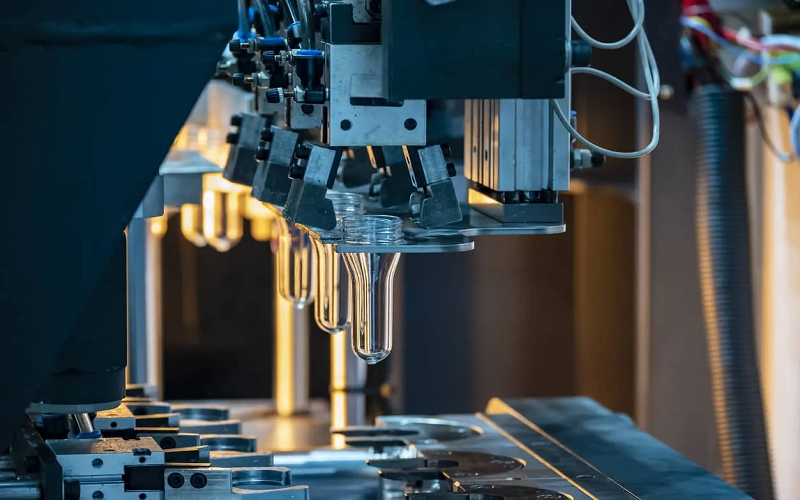
The Working Principles of Blowing Molding Process
The blow molding process is a sequence of carefully orchestrated manufacturing processes. It begins with preparing and melting the raw materials, followed by forming a parison, clamping it in a mold, inflating it with air, cooling, and finally, demolding and trimming the finished product.
Raw Material Preparation And Melting
The process begins with thermoplastic resin pellets like polyethylene (PE), low density polyethylene, and polypropylene (PP) fed into an extruder, where they are heated and melted into a pliable state.
Parison Formation
Molten plastic is extruded through a die head, forming a parison. The thickness and diameter are carefully controlled to ensure quality.
Mold Closure
The parison is transferred to the mold area, where the mold closes around it, dictating the final appearance of the product.
Blowing Process
Compressed air is injected into the parison through a blow pin, causing it to expand and conform to the mold’s interior.This inflation process typically takes just a few seconds.
Cooling and Ejection
Cooling systems with water channels rapidly cool the expanded plastic, solidifying it in the mold’s shape. The cooling time varies based on the product’s thickness and size.
Once solidified, the mold opens, and the product is ejected. Excess material is trimmed, and surface treatments may be applied to meet specifications.
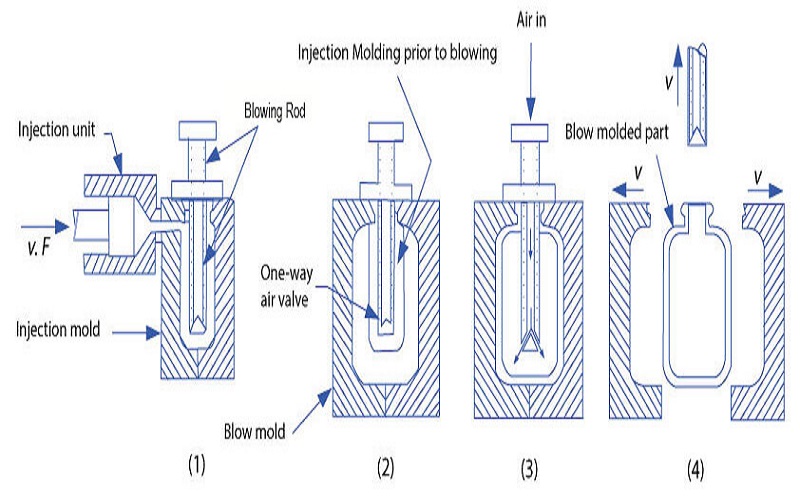
Types of Blowing Molding Techniques
Blow molding encompasses various techniques, each tailored to specific production needs. These include extrusion blow molding, injection blow molding, and stretch blow molding.
Each method offers unique advantages in terms of product complexity, size, and production efficiency.
Extrusion Blow Molding
Extrusion blow molding is known for high productivity and automated quality checks, involving melting thermoplastic material and inflating it in a mold to create the desired shape. It’s commonly used for bottles, containers, and various hollow parts.
Plastic is extruded into a parison, then inflated within a mold using compressed air, ideal for manufacturing bottles, barrels, cans, and toys.
The main advantage of extrusion blow molding is its high production efficiency, although the precision and surface smoothness of the products may be relatively lower compared to other methods.
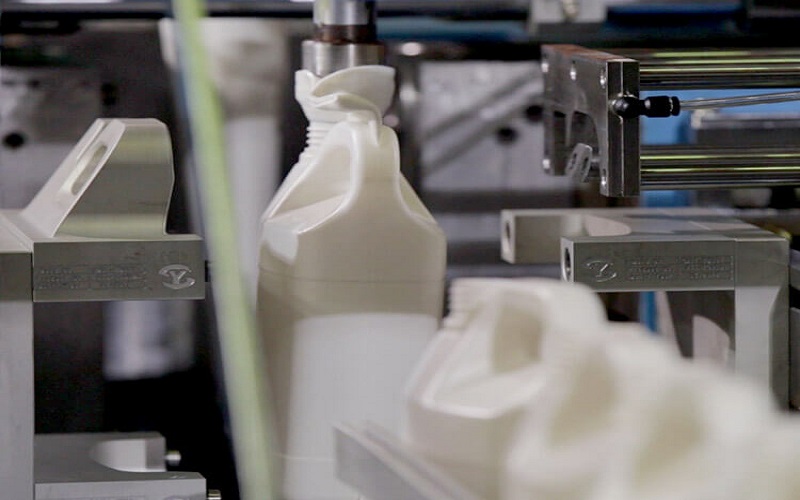
Injection Blow Molding
Blow Injection molding excels in creating precise hollow plastic products. It starts with injection molding a parison, then transferring it to a blow injection mold for inflation, suitable for products requiring accuracy and smooth surfaces like pharmaceutical and cosmetic packaging. Our injection molding services enhance this process by ensuring high-quality production.
Injection blow molding produces uniform wall thicknesses and high-quality finishes without post-processing. However, the initial investment is higher, making it suitable for small-batch, high-precision production.
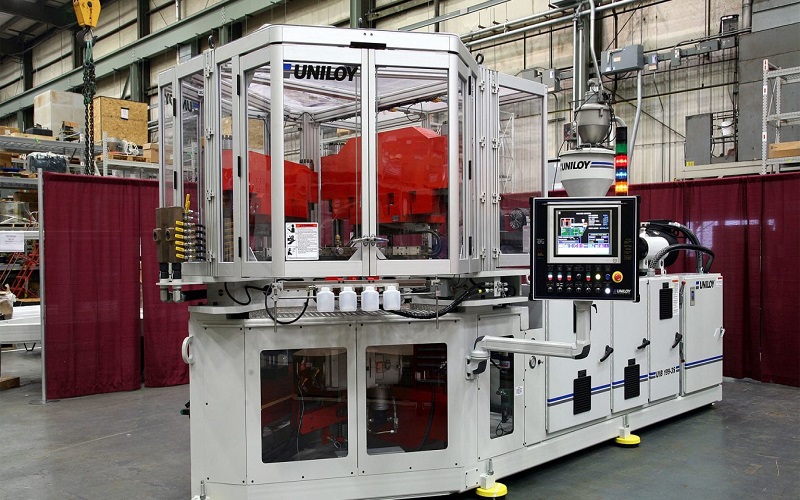
Stretch Blow Molding
Stretch blow molding heats preforms and stretches them in two directions, enhancing product durability. This method is efficient and commonly used for lightweight, strong containers like beverage bottles and food containers, including injection stretch blow molding.
This technique improves a product’s transparency, impact strength, and surface hardness, suitable for high-strength items like linear polyester beverage bottles.
Stretch blow molding includes hot parison and cold parison methods; the former requires heating, while the latter saves energy by eliminating additional heating.
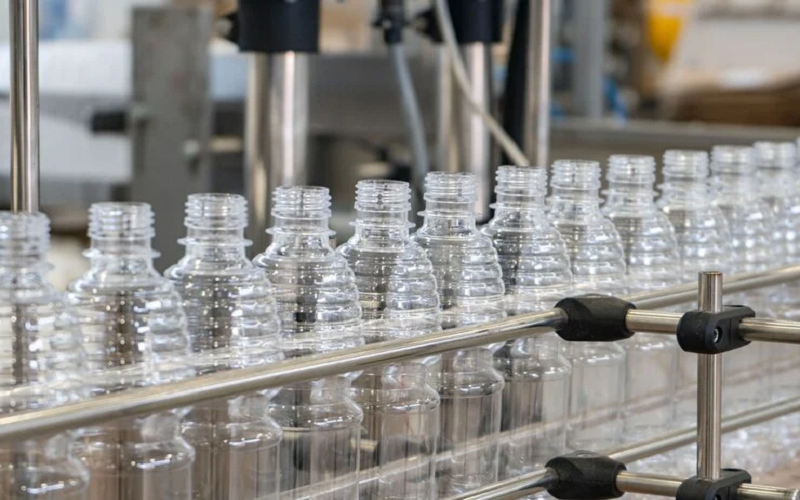
Materials Used in Blowing Molding
Blow molding uses various thermoplastic materials like high-density polyethylene (HDPE), polypropylene (PP), and polyethylene terephthalate (PET), chosen for their chemical resistance, durability, and suitability for different applications.
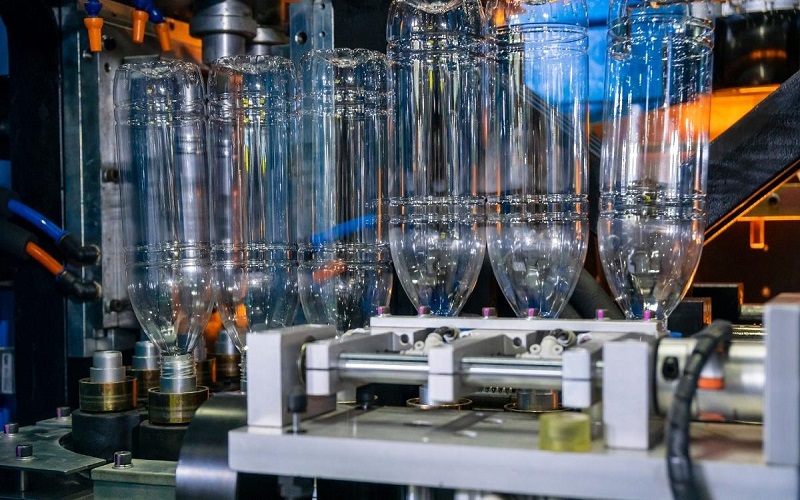
Applications of Blow Molded Products
Custom blow molding products are used in numerous industries, including packaging, consumer goods, medical devices, and industrial components, making them indispensable in modern manufacturing.
Packaging
In packaging, blow-molded products are valued for their sealing properties, durability, and transparency, used to manufacture containers like beverage bottles, edible oil drums, cosmetic packaging, and pesticide bottles.
Blow-molded packaging is recyclable, aligning with sustainable development and environmental protection principles.
Industrial Parts
In industry, blow-molded products manufacture automotive components like air filter housings and fuel tanks, which need to be lightweight, corrosion-resistant, and well-sealed. They are also used in pipeline systems, valve components, and electrical insulation materials.
Medical Devices
Medical-grade blow-molded products include disposable syringes and infusion bags, ensuring hygiene and safety in medical procedures.
Consumer Products
Blow molding technology also applies to the consumer goods market, producing items like plastic toys, inflatable water park facilities, household storage boxes, and flower pots.
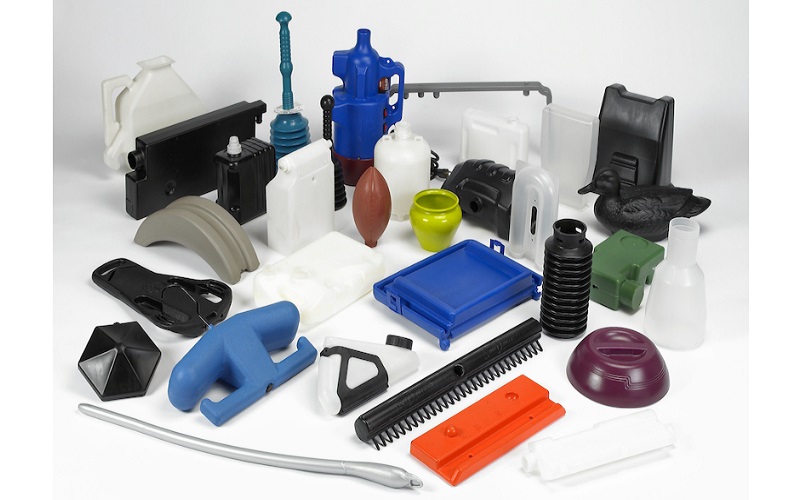
Custom Blowing Molding Solutions
Customization in blow molding allows tailored product solutions. Modern machines offer advanced features to meet specific client needs for unique packaging and designs, from custom blow molding services to prototype reviews testing feasibility and functionality before full-scale manufacturing.
These machines showcase exceptional molding capabilities, utilizing advanced equipment and technologies to deliver high-quality, large, and complex molded parts across various industries.
Mold design assistance enhances functionality and efficiency during production. In-house engineers offer design and customization services and assist with assembly and packaging for seamless integration of components.
Packaging and warehousing solutions protect blow-molded products during transit and storage, ensuring efficient delivery.
Secondary operations like part decoration and labeling enhance product customization, making custom blow molding a versatile solution for diverse needs.
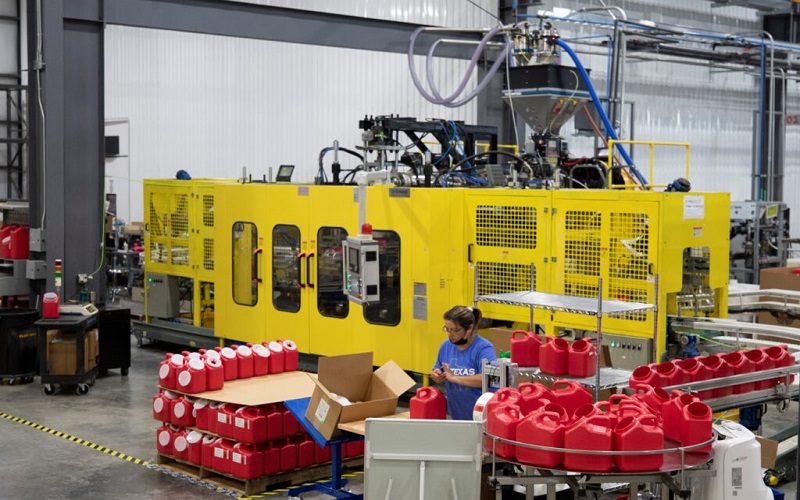
Benefits of Using Blow Molding for Manufacturing
Blow molding offers numerous benefits, making it a preferred manufacturing method. One primary advantage is cost-effectiveness; extrusion blow molding requires lower pressure and eliminates preforms, reducing production costs.
This method accounts for approximately 75% of blow-molded products, especially effective for containers of various sizes.
Blow molding allows for complex designs and intricate shapes, accommodating a range of thermoplastic materials like polyethylene and polypropylene, each offering properties suited to different products.
The process ensures high production efficiency, with parts entering blow molds without secondary heating, enhancing manufacturing speed. Blow-molded products exhibit excellent structural performance, with uniform wall thickness and smooth surfaces, ideal for high-end packaging and other applications.
Innovations in Blow Molding Technology
Innovations in blow molding have enhanced production efficiency and product quality. Latest blow molding machines offer improved speed, reliability, and customization. High-speed PET machines, for example, revolutionize production capabilities, meeting high-volume demands efficiently.
Robotic technology enhances efficiency and accuracy in various stages of blow molding. Smart technologies enable real-time monitoring and predictive maintenance, ensuring smooth production processes.
Modern blow molding equipment reduces energy consumption, contributing to cost savings and environmental sustainability. Sustainable practices, including using recycled materials, are becoming more common, aligning with the emphasis on eco-friendly manufacturing.
How to Choose A Blow Molding Manufacturer?
Choosing the right blow molding manufacturer ensures quality, cost-effectiveness, and production efficiency.
Key factors include the manufacturer’s production capacity to meet your demand and evaluating supplier reputation through customer testimonials and case studies for insights into reliability and service quality.
Long-term partnerships with suppliers can improve service and support over time, making it beneficial to choose a manufacturer that values such relationships.
Assessing the manufacturer’s capabilities in custom blow molding, mold tooling, and secondary services ensures they meet your specific needs and provide comprehensive solutions.
Summary
Blow molding is a versatile and efficient manufacturing process that plays a critical role in producing a wide variety of hollow plastic products.
Understanding the different techniques, materials, and applications of blow molding can help businesses make informed decisions and leverage the benefits of this technology.
From its fundamental principles to the latest innovations, blow molding continues to evolve, offering enhanced production efficiency and product quality.
Choosing the right blow molding manufacturer involves careful consideration of their capabilities, reputation, and ability to meet specific production needs.
By focusing on these factors, businesses can ensure they partner with a manufacturer that provides high-quality, cost-effective, and reliable blow molding solutions.
The future of blow molding looks promising, with ongoing advancements and a growing emphasis on sustainability and efficiency, making it an exciting field to watch.
Frequently Asked Questions
What is blow molding?
Blow molding is a manufacturing process that creates hollow plastic products by inflating a heated plastic preform within a mold using pressurized air. This technique allows for efficient production of complex shapes and designs.
What are the main types of blow molding techniques?
The main types of blow molding techniques are extrusion blow molding, blow molding, and stretch blow molding, each designed to meet specific production requirements. Understanding these techniques will help you choose the right method for your manufacturing needs.
What materials are commonly used in blow molding?
Common materials used in blow molding are high-density polyethylene (HDPE), polypropylene (PP), and polyethylene terephthalate (PET), each providing specific benefits tailored to various applications.
What are the benefits of using blow molding for manufacturing?
The benefits of using blow molding for manufacturing are its cost-effectiveness, high production efficiency, and versatility in creating complex designs with various thermoplastic materials. This process significantly enhances manufacturing capabilities and reduces overall costs.
How can I choose the right blow molding manufacturer?
To select the right blow molding manufacturer, focus on their production capacity, reputation, quality of services, and expertise in offering custom solutions. These factors are crucial in ensuring that your specific needs are adequately met.
